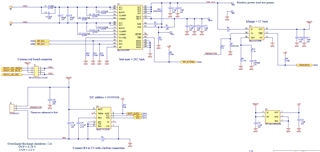Other Parts Discussed in Thread: BQ25101,
Bill Jones
I see you've answered similar questions to this before and though I would ask you.
We have a BQ51003 (with a custom PCB receiving coil), and a downstream BQ25101 charging a battery.
After the battery is charged, the BQ51003 receiver 'turns off' and stops charging. Then the wireless Qi transmitter sees the wearable as a foreign object and goes into fault.
If the device is removed from the transmitting coil the FOD fault on the transmitter is cleared and charging can start again.
Toggling the enable line (EN1 and EN2) on the BQ51003 does not help to clear the FOD fault on the transmitter.
The BQ51003 is set to 262.5mA max current, and the BQ25101 is set to 37.5mA output. Can this difference in currents be an issue, the BQ25101 ~7x less than the B151003?


